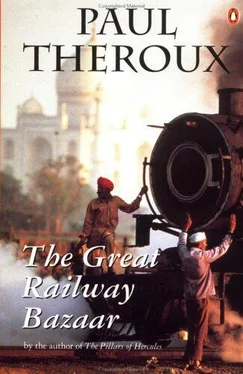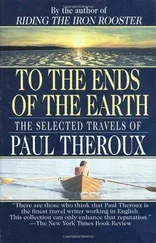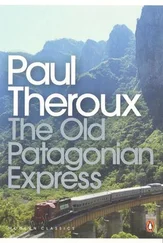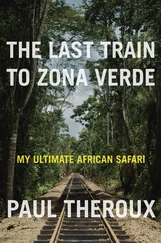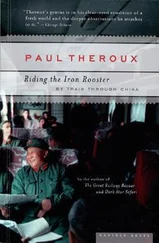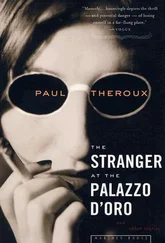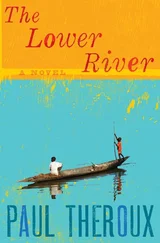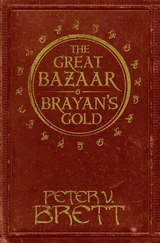Among the narrow thoroughfares at hand, there lingered, here and there, an ancient doorway of carved oak, from which, of old, the sounds of revelry and feasting often came; but now these mansions, only used for storehouses, were dark and dull, and, being filled with wool, and cotton, and the like – such heavy merchandise as stifles sound and stops the throat of echo – had an air of palpable deadness… In the throats and maws of dark no-thoroughfares… wholesale dealers in grocery-ware had perfect little towns of their own; and, deep among the foundations of these buildings, the ground was undermined and burrowed out into stables, where cart-horses, troubled by rats, might be heard on a quiet Sunday rattling their halters, as disturbed spirits in tales of haunted houses are said to clank their chains…
Then there were steeples, towers, belfries, shining vanes, and masts of ships: a very forest. Gables, housetops, garret-windows, wilderness upon wilderness. Smoke and noise enough for all the world at once.
There is more, and it is all good, but I think I have quoted enough to show that the best description of Calcutta is Todgers' corner of London in Chapter IX of Martin Chuzzlewit. But having decided that Calcutta was Dickensian (perhaps more Dickensian than London ever was), and knowing that I could not share either the excitement of the Bengalis, who agreed with the enormous billboard put up by the State Bank of India (Calcutta is forever), or, what is more curious, the chummy regard of the Americans I met there for this vast and yet incomplete city that I felt would someday undo them, I decided to leave it and so leave India.
I was on my way when I saw the hopping man in the crowd on Chowringhee. He was very strange: in a city of mutilated people only the truly monstrous looked odd. This man had one leg – the other was amputated at the thigh – but he did not carry a crutch. He had a greasy bundle in one hand. He hopped past me with his mouth open, pumping on his shoulders. I went after him, and he turned into Middleton Street, hopping very fast on one muscular leg, like a man on a pogo stick, his head rising above the crowd, then descending into it. I couldn't run because of the other people, black darting clerks, swamis with umbrellas, armless beggars working their stumps at me, women proffering drugged babies, strolling families, men seeming to block the sidewalk with their wide flapping trousers and swinging arms. The hopping man was in the distance. I gained on him -I saw his head clearly – then lost him. On one leg he had outrun me, so I never found out how he did it. But afterwards, whenever I thought of India, I saw him -hop, hop, hop – moving nimbly through those millions.
THE MANDALAY EXPRESS
At sundown in Rangoon, the crows that have been II blackening the sky all day soar to their roosts as the shrill bats waken and flap in hectic circles around the pagoda-style towers of the railway station. I arrived at this hour: the bats were tumbling past the crows, and the pale yellow sky was inked like Burmese silk with the brush marks of the black bodies. I had arrived by air in Rangoon on a Saturday night – there is no train from India – and the Burmese appetite for movies I had noticed on a previous visit was undiminished. Sule Pagoda Road, with its five theatres, was mobbed with people, dressed identically in shirt, sarong, and rubber sandals, men and women alike puffing thick green cheroots, and looking (as they waved away the smoke with slender dismissing fingers) like a royal breed, strikingly handsome in this collapsing city, a race of dispossessed princes.
I had only one objective in Burma: to take the northbound trains from Rangoon via Mandalay and Maymyo to the Gokteik Gorge in the Shan States, beyond which China sprawls. Across this gorge is a magnificent steel trestle bridge, the Gokteik Viaduct, built in 1899 by the Pennsylvania Steel Company for the British Raj. I had read about the bridge, but not in any recent book. Early in this century enthusiasm for railway travel produced a spate of optimistic books about railway travel: the French were building the Transindochinois line to Hanoi, the Russians had brought the Trans-Siberian almost to Vladivostok, the British had laid track to the very end of the Khyber Pass, and it was assumed that Burmese railways would extend in one direction to the Assam-Bengal line and in the other to the railways of China. The books had apocalyptic titles like The Railway Conquest of the World (by Frederick Talbot, 1911) and described, country by country, how the globe was to be stitched by railway track. The judgements were occasionally disagreeable. Ernest Protheroe in Railways of the World (1914) wrote: 'John Chinaman – cunning, tenacious, and virile – for centuries kept the "foreign devil" at arm's length… But, however much the Chinese hated the white man, they commenced to recognize the value of railways…' The Gokteik Viaduct, much celebrated in these books, was an important link in a line that was projected beyond the northern border town of Lashio into China. But the line had stopped at Lashio (nor were Burmese railways ever to meet Indian ones), and I had heard many rumours about this American-built bridge: one was that it had been blown up during the Second World War; another that the line had been captured by Burmese rebel forces under the command of U Nu; and another that it was off-limits to foreigners.
To avoid startling the Burmese at the ticket window of Rangoon Station I asked about the train to Mandalay. There were two men at the window. The first said there was no printed timetable I could buy. The second said, 'Yes, we have no timetable.' It seemed to be the practice in Burma to have two men at each job, the second to confirm whatever the first said. Instead of a timetable, and like Ceylon, there was a blackboard at each station with the arrivals and departures chalked on it. But both men were certain about the Mandalay train.
'Departure, seven o'clock. Morning time.'
There was one class, they said. I was to find this to be the equivalent of Indian third class – wooden seats, broken windows, no berths, no bedrolls, no dining car, none of the complex comfort of Indian Railways, involving retiring rooms, dinner coupons, bedding chits, invoice for upper-class luggage, ticket vouchers, and morning tea.
'I'd like a ticket to Mandalay.'
'Sorry, the window is closed.'
But the window was open. I mentioned this.
'Yes, it is open so to say, but it is closed for selling.'
'You come at six o'clock, morning time,' said the second man.
'Are you sure I'll get a ticket?'
'Maybe. Even much better come at five-thirty.'
'How long does it take to get to Mandalay?'
'Twelve hours. But it breaks down. You might arrive Mandalay at eight.'
'Or nine?'
They both laughed.
'Or nine, but no later!'
I walked over the bridge to the city, and I was in a large crowd of Burmese when a hand reached out and grabbed my wrist in such a powerful clamp of fingers I couldn't shake it off. It was a Buddhist monk, holding on and yapping at me. Small, monkey-faced, with a shaven head, he was half my size and seemed angry as he repeated the phrase 'Blum chyap… blum chyap.' I overcame my surprise and stopped struggling, assuming he was asking for money, and finally I fathomed that he was begging, saying, 'One kyat' (about twenty cents). This gripping seemed an extortionate way to beg, so I gave him half a kyat and when he released me to take the money I ducked into the crowd. There were other monks in the mob, looking sweet and benign as they cadged money from strangers.
Further on, a Burmese with a telescope urged me to have a look. I paid my fee of 25 pyas (five cents), but the star I saw through his instrument looked slightly smaller and less impressive than it did with the naked eye. I walked aimlessly, speeding up when a man sidled over to me and offered a Chinese girl ('Come!'), slowing down at temples where children – still awake at eleven at night – wove ropes of flowers and laughed before Bud-dhas. Older people knelt in veneration, or set up displays of fruit, balancing a melon in a hand of bananas on a temple shelf and sticking a red paper flag into the melon. Elderly women leaned against flower stalls, the smoking cheroots in their hands giving them a look of haughtiness and self-possession.
Читать дальше
